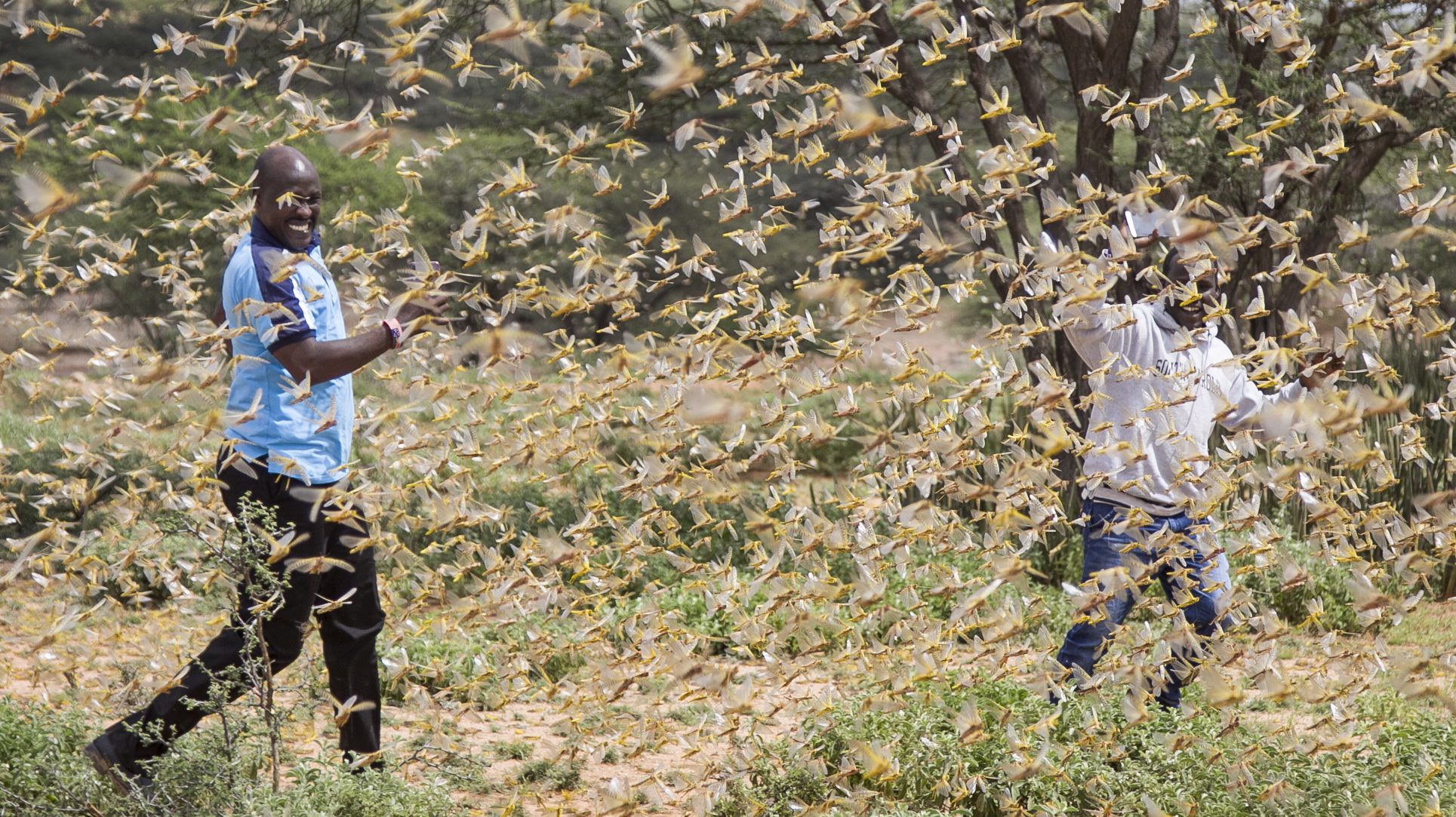10 Plagues of Egypt Bingo is a game you just don’t want to win. East Africa is yet to tick off rivers of blood, death of firstborns and thunderstorms of hail and fire, but they are unfortunately off the start line with locusts.
Billions of desert locusts are currently storming through East African farmlands on a biblical scale. According to the Food and Agriculture Organization of the United Nations (FAO), Somalia and Ethiopia haven’t experienced swarms this size for 25 years, while for Kenya it’s been 70 years.
Desert locusts are the world’s most dangerous migratory pest. They are herbivorous insects similar to grasshoppers and are a mere 6-8 cm. They are usually solitary but when conditions are right, they find their inner Mick Jagger and breed at a staggering rate, forming swarms. Locusts can consume their own weight in food in a single day. Now, this may not sound like much, but when one swarm can consist of a billion (that’s 1,000,000,000) locusts, it has devastating consequences.
To highlight just how damaging Desert Locust swarms are, here are some fast facts. A desert locust swarm of one square kilometre contains roughly 40 million locusts and this swarm can consume 80 tonnes of food per day.
a medium size swarm, which covers 10 – 100 square km, would equate to 350,000 to 3.5 million people’s food being eaten by locusts each day
That’s enough to feed 35,000 people, roughly the population of the University of Leeds, every day. This means that a medium size swarm, which covers 10 – 100 square km, would equate to 350,000 to 3.5 million people’s food being eaten by locusts each day.
But what caused swarms of this size? According to the FAO, it started with cyclones that brought heavy rain in the Empty Quarter of the southern Arabian Peninsula in May and October of 2018. So much rain fell that lakes started to form between sand dunes, encouraging vegetation to grow – and where there’s a lot of vegetation, locusts are not far behind. Three generations of breeding went undetected, which meant that no control measures were put in place. In January 2019, the first swarms left the Empty Quarter to Yemen and Saudi Arabia, where they continued to breed and spread further, reaching Somalia and Ethiopia around October 2019.
Since then, the swarms have continued to grow, spread and decimate crops. In February 2020, there were reports that the desert locusts had reached northeast Uganda and northern Tanzania.
Farmers are at their wit’s end as not much can be done at a local level to stop the locusts. The United Nations has said that the only effective way to combat them is by spraying pesticide from aircraft and they have allocated $10 million to get this done. This seems like a large sum, but could be inconsequential as the UN warned that a further $60 million may be needed to combat the locusts effectively.
According to the New Scientist, there isn’t a clear scientific link between climate change and the cyclones that caused the locust swarms, but the UN has stated that “climate change may have contributed to the outbreak”.
I for one am not surprised as the climate crisis has accelerated and intensified many recent natural disasters and the interlinked nature of ecosystems often obscures the impact it is having on all facets of the earth system.
If there is an increase in cyclones, as has been the trend in the past ten years, there will likely be more frequent desert locust outbreaks.
If left unchecked, there will be havoc on the same scale as currently seen in East Africa, if not worse. The combination of cyclones, warm weather and all-you-can-eat food supply really is the recipe for a perfect swarm.
image source: AP Photo/Patrick Ngugi

